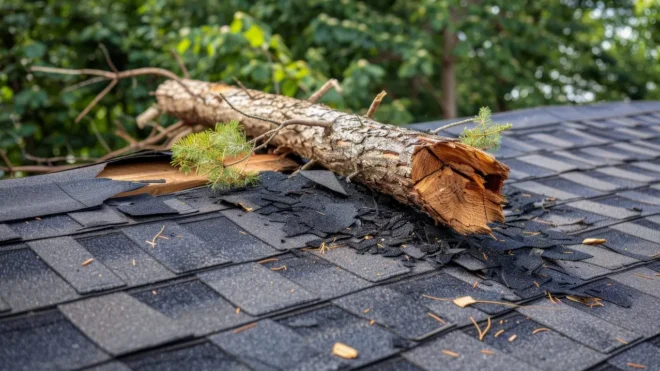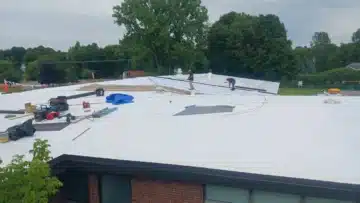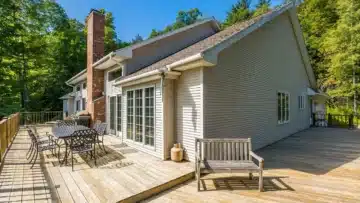When it comes to protecting your home from the unpredictable Vermont weather, understanding the durability of architectural roofing shingles is crucial. These shingles not only enhance your home’s aesthetic appeal but also play a significant role in its structural integrity. In this post, we’ll explore the top considerations that make these shingles a popular choice among homeowners, particularly in Vermont’s unique climate.
Understanding Architectural Roofing Shingles
Architectural roofing shingles differ from traditional options in terms of design and durability. They are made from layered materials that enhance their structural integrity, offering superior weather resistance. Unlike three-tab shingles, which are more commonly used, architectural shingles provide a more authentic, dimensional look. Their intricate design isn’t just about beauty; it’s also about performance.
With architectural shingles, you’re not just getting a roof over your head; you’re investing in a protective barrier against the elements. They are often crafted from fiberglass mat layers, coated with asphalt, and finished with mineral granules. This construction contributes to their robustness, making them especially suited for Vermont’s unpredictable seasons.
Beyond aesthetics and construction, it’s vital to recognize how these shingles can accommodate various roofing styles. Architects and homeowners alike appreciate their versatility as they blend seamlessly with different home designs, whether modern, rustic, or traditional. Thus, understanding their features gives homeowners a stronger foundation to make informed decisions.
Vermont’s Unique Climate Challenges
Vermont’s weather can be harsh, characterized by snow, ice storms, and heavy rain. Understanding how different roofing materials perform under these conditions is essential for long-term home protection. The chilly winters might lead homeowners to worry about ice dams, but architectural roofing shingles are particularly equipped to handle the stress placed upon them by snow and ice build-up.
Moreover, the summer months can bring intense heat and thunderstorms, which can wreak havoc on roofs without the right materials. The layered design of architectural shingles provides not just insulation during the winter but reflects heat during summer. This capability helps maintain a comfortable indoor climate and can even result in significant energy savings, a top priority for many homeowners in Vermont.
It’s also worth noting how moisture and humidity can affect roofing. The durable surface of architectural shingles helps to resist mold and algae growth, which are common problems in humid climates. Adapting to Vermont’s specific climate challenges means that these shingles aren’t just a trendy choice; they’re a practical necessity for any homeowner looking to protect their investment.
Longevity of Architectural Shingles
One of the major advantages of architectural shingles is their longevity. Typically, they can last up to several decades, which can save homeowners money in the long run when considering replacement costs. Many manufacturers offer warranties that last 30 years or more, giving homeowners peace of mind. This assurance is especially important when considering Vermont’s fluctuating temperatures and extreme weather conditions.
The lifespan of roofing materials can be directly linked to the quality of installation. Professional contractors understand that a proper installation not only adheres to manufacturer guidelines but also acknowledges local codes and best practices. Therefore, when investing in architectural shingles, coupling this choice with skilled labor can be crucial in ensuring the maximum durability and lifespan of your roof.
In addition to longevity, architectural shingles require less frequent insulation compared to other roofing types. This means fewer disruptions and less inconvenience in the long run. Homeowners can rest assured knowing that their investment will stand the test of time, weathering Vermont’s intense seasonal shifts while maintaining the integrity of their homes.
Energy Efficiency and Cost Savings
Architectural shingles can also contribute to energy efficiency in your home. By reducing heat loss and improving insulation, they can lead to lower heating and cooling bills, especially important in Vermont’s varying seasons. This energy efficiency is not just about comfort; it can also translate into substantial savings on your utility bills over time.
Investing in energy-efficient roofing can reduce your home’s carbon footprint, aligning with many homeowners’ goals for environmental sustainability. Architectural shingles can reflect heat during the summer and add insulation in the winter, which ultimately lessens reliance on heating and cooling systems. This dual functionality makes them an eco-friendly choice for those living in both urban and rural Vermont.
Another way you can reap the financial rewards is through potential tax incentives for energy-efficient home improvements. By selecting architectural shingles that meet certain energy standards, you may qualify for rebates or tax credits, allowing an even greater financial return on your investment. It’s a win-win situation for both your wallet and the planet!
Aesthetic Appeal and Customization Options
These shingles come in various colors and styles, allowing homeowners to personalize their roofs to suit their home’s design. This aesthetic flexibility can also enhance curb appeal and potentially increase property value. Homeowners can choose from a wide range of textures and profiles, ensuring that their roof complements the architectural style of their home.
Choosing the right shingles can significantly influence the overall look of your home. For instance, a darker roofing palette can create a dramatic contrast with lighter siding, while earth-toned shingles can add a rustic touch that blends seamlessly into the Vermont landscape. These options enable you to not only protect your home but also to express your personal style.
Additionally, with the advent of technology, many architectural shingles now mimic the appearance of more expensive materials, such as slate or wood shakes, at a fraction of the cost. This means homeowners can achieve high-end aesthetics without breaking the bank. The combination of beauty, functionality, and affordability truly makes architectural roofing shingles a smart investment for any homeowner.
Maintenance Tips for Longevity
While architectural shingles are durable, regular maintenance is essential to ensure their longevity. Simple tasks like clearing debris and monitoring for damage can significantly extend their life span. Heavy snowfall or fallen branches from trees can lead to potential issues if not addressed in time, so it’s crucial to remain vigilant.
Moreover, scheduling routine inspections can help catch minor problems before they escalate. Consider hiring a professional once a year to evaluate the condition of your roof. They can identify any early signs of wear and recommend repairs where necessary, saving you time and money down the line.
By keeping your roof clean and ensuring any maintenance tasks are completed promptly, you can enjoy the benefits of your architectural roofing shingles for years to come. After all, protecting your investment involves not just the initial cost but the ongoing care that helps maintain the value of your home.



